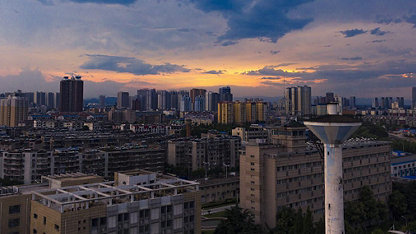On 12 April 2025, 08:00 BST, we will be disabling logins for specific member-facing platforms to improve internal processes. We expect this to finish 12 April 2025 at 17:00 BST.
The sheer scale of the impact of Covid-19 on the global economy is hard to fathom. This is reflected in the wide range of estimates as to the likely loss of output caused by the spread of the virus. It is underscored by the very uncertain trajectory that most forecasters are now pencilling in for recovery.
The challenge for forecasters was helpfully contextualised by the IMF in its recently released half-yearly assessment. A baseline assuming a reopening of the global economy in the second half of the year was set against three alternative scenarios, each of which appears equally plausible. The first is centred around an extended lockdown; the second highlights the threat presented by a second wave of Covid-19 infections towards the end of the year and into 2021; the third combines both of these in the gloomiest of the simulations.
As I acknowledged in my previous piece, the response from policymakers – both governments and central banks – has been substantial in magnitude, rapid in delivery and truly radical. It has also challenged received wisdom in a number of key areas. And yet, despite this unprecedented set of interventions, there is little conviction that the measures taken so far will be sufficient to inspire a sharp turnaround. A bounce back was initially quite widely predicted for the second half of the year; that consensus is beginning to fragment.
Register now: Can the retail sector survive the Covid-19 crisis?
Covid-19 regional impact series
At one point, it seemed that the global economy could be put into a form of temporary hibernation and subsequently restarted from pretty much the same point. Recent news of corporate failures and job losses has rendered this proposition fanciful. Full recovery would be a return to the level of economic output that pertained in the early part of this year. My sense is that to anticipate such a return before the first half of 2022 would be optimistic. While the possibility should not be dismissed, it would be more realistic to build in a more graduated revival in business activity.
Richer nations at least have the capacity to pursue policies that can cushion, if not fully mitigate, the economic hit. There will inevitably be medium-term consequences resulting from the dramatic measures being implemented, and they will need to be addressed further down the road. For poorer countries, though, the impact threatens to be immeasurably more severe. Developing economies lack the necessary domestic fiscal resources and face potential constraints in accessing finance from elsewhere.
This helps to explain the current discussion around a possible allocation of Special Drawing Rights. SDR is a type of international currency overseen by the IMF which can be converted into hard currency when required. However, it is hard to envisage the key players reaching an agreement on this course of action in the current environment. Concerns persist about whether the Fund should be ‘printing money’ as well as the ‘conditionality' of any such action. Indeed, at a time when international co-operation is absolutely critical, there are signs that cross-border recriminations are growing. This does not augur well.
Looking ahead, it is natural to wonder how a post-Covid-19 world might look. First and foremost, big government looks likely to be a key part of the future – at least for a while to come. State involvement in so many areas of our private lives is unprecedented in peacetime. While this should gradually be scaled back, the legacy of current policies may well be enduring. Indeed, the need to prepare for further pandemics will likely change the relationship between public and private sphere in a meaningful way.
“At a time when international co-operation is absolutely critical, there are signs that cross-border recriminations are growing. This does not augur well. ”
Alongside this, it will be necessary to address the consequences of current interventions – most notably the ballooning level of public debt. With interest rates set to remain low, this might not be seen as an urgent priority. However, in the medium-term it is likely to prompt governments to look at means of increasing tax revenues. It could also fuel further debate around other potential policy. These will probably include the role of ‘helicopter money’ as an alternative to further government borrowing, and a Universal Basic Income as a replacement for current workplace support mechanisms.
For businesses, the pandemic has demonstrated the risk around efficient, lean processes and the inherent vulnerability of global supply chains. Approaches to building resilience will be both operational and strategic in nature. A reassessment of markets and geographies is a more plausible outcome than a return to business as usual. Amongst other things, this could lead to a reorientation of production processes towards locally sourced products and components. It could also drive moves towards ‘just in case’ inventories, rather than ‘just in time’ lines of supply. Meanwhile, there is likely to be a significant uplift in tech investment, so as to support greater flexibility around work practices and enhanced digital interaction.
How this might play out in terms of the sustainability agenda remains to be seen. On one hand, the response to the pandemic has demonstrated how conventional constraints can be put aside and a variety of levers pulled in the management of international crises. On the other, the desire to fuel a job-hungry recovery as quickly as possible may encourage governments around the world ease regulatory burdens rather than tighten them.
As a straw in the wind, it is worth noting that Environmental, Social, Governance (ESG) stocks actually outperformed the wider stock market in the first quarter of the year. This could be an indication as to the shape of any future recovery; we can only wait and see whether the trend will persist.






